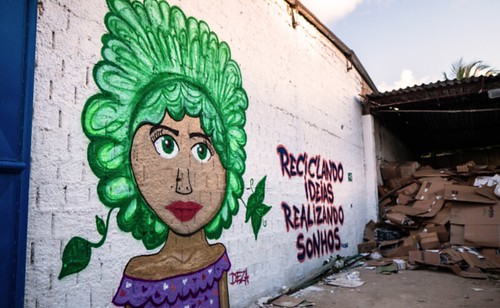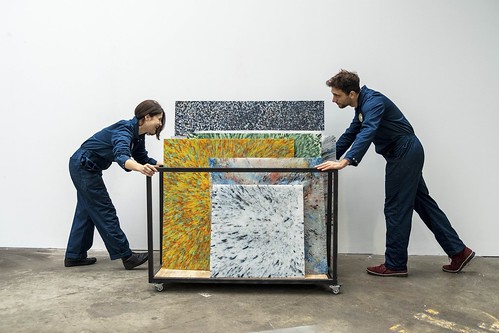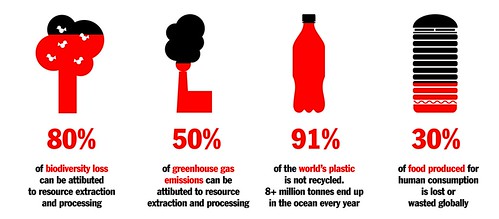Wednesday, 11:00am
5 May 2021
Have we all been bad designers?
Humans invented waste, and designers are part of the problem. Richard van der Laken writes about the No Waste Challenge

Recent data suggests that our landfills are growing by some two billion tonnes of garbage every year, writes Richard van der Laken.
Meanwhile, one-third of all the food produced for human consumption is wasted, and a whopping eight million tonnes of plastic are dumped into our oceans every year.
Portrait of Richard van der Laken, co-founder and creative director of What Design Can Do.
Top: The No Waste Challenge asked designers and innovators to rethink the entire ‘take-make-waste’ economy, in order to tackle the global issue of waste and change the way we produce and consume. The open call received 1409 entries. Graphics and portrait: What Design Can Do.
![Richard WDCD [CROP]](https://live.staticflickr.com/65535/51144554028_e615e47bc4.jpg)
Considering that waste is no accident, that’s a lot of bad design. As Cradle to Cradle author William McDonough reminds us: waste is not present in nature. Humans invented it, by way of many ‘crude and unintelligent’ decisions. These decisions often have to do with profit, and take place long before a product even hits the shelves. As a designer myself, I find it painful but necessary to admit that we are a huge part of the problem.
Everything around us has been designed: the clothes we wear, the buildings we live and work in, even the systems that deliver our food and mobility. The trouble is that most things have been designed to fit the linear model, where life cycles are short, resources are exploited and materials are nearly impossible to recover. Throughout the twentieth and twenty-first centuries, design has been employed to make things desirable one day and disposable the next. The issue is structural, and if you have ever pitched a product or sold a campaign then the chances are that you are a part of this system. After all, the ‘seductive power of design’ is a well known phenomenon in the industry. You can use design to tempt people. For better, and for worse.
The current practice of ‘take-make-waste’. Most routes lead to waste and greenhouse gas emissions. Graphics by What Design Can Do.

Looking back at my career, I have my own confessions to make. As a young designer, I had little regard for the impact my work had on the planet. I co-founded a studio and made a lot of stuff. Like most graphic designers, I had a craving to print and publish. If that meant making point-of-sale material for a brand of mass-produced plastic products, then that is what we did. Now, I regret that we promoted so many things with hardly any value – not for the user, not even for our portfolio. Looking around at the our industry, I can only despair at how much time we have all spent on designing trash.
A cooperative in the neighbourhood of Imbiribeira (south zone of Recife-PE, Brazil) was revitalised by thirteen artists. Pimp my Carroça, started in São Paulo in 2012, fosters a greater visibility of recyclable material collectors.

So where do we go from here? If you ask me, we need to be better designers. We can all blame each other, but I think it is more useful to think about what we can do together. Designers are in a unique position to change how things are made and what they are made of. Design also has an important role to play in shifting narratives, in making possible alternative visions of the future. And there are reasons to be optimistic – many creative people are already taking an active role in the transition to a more circular economy and system.
Precious Plastic, started in 2013 by Dave Hakkens, offers tools for recycling plastic anywhere.

Good examples abound, such as Precious Plastic, the do-it-yourself plastic recycling station created by Dutch designer Dave Hakkens back in 2013. Or Petit Pli, an ingenious range of kids’ clothing by engineer Ryan Mario Yasin, that can expand up to seven sizes as your children grow. Another exciting project is Pimp My Carroça, a campaign founded by artist Thiago Mundano that supports the livelihoods of waste-pickers in Brazil.
Petit Pli, started by Ryan Mario, is a clothing brand offering garments that expand up to seven sizes.
 These are the kinds of ideas we need to throw our weight behind. As the leader of a design-driven organisation [What Design Can Do], I have taken the initiative by setting up a long-term programme to mobilise the creative community around these issues. It started with the No Waste Challenge – a global design competition calling for radical ideas to reduce waste and rethink our entire production and consumption cycle. The open call closed last week on 20 April 2021, and the response has been staggering. A total of 1409 solutions were submitted. The turnout is hopeful, but we have to go further. Now, more than ever, the design community must own up to its responsibilities. We must step up to our potential. There’s no time to lose.
These are the kinds of ideas we need to throw our weight behind. As the leader of a design-driven organisation [What Design Can Do], I have taken the initiative by setting up a long-term programme to mobilise the creative community around these issues. It started with the No Waste Challenge – a global design competition calling for radical ideas to reduce waste and rethink our entire production and consumption cycle. The open call closed last week on 20 April 2021, and the response has been staggering. A total of 1409 solutions were submitted. The turnout is hopeful, but we have to go further. Now, more than ever, the design community must own up to its responsibilities. We must step up to our potential. There’s no time to lose.
Obstacles to the goal of a circular economy. Graphics by What Design Can Do.

Richard van der Laken, co-founder and creative director of What Design Can Do
Eye is the world’s most beautiful and collectable graphic design journal, published for professional designers, students and anyone interested in critical, informed writing about graphic design and visual culture. It is available from all good design bookshops and online at the Eye shop, where you can buy subscriptions and single issues.
